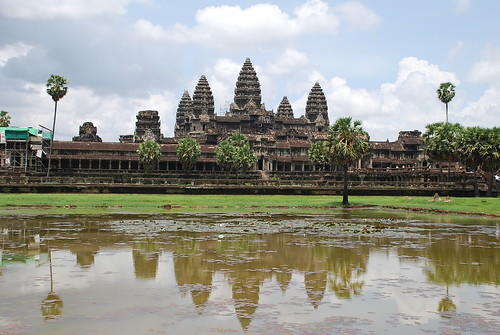
Nestled deep in the jungles of Southeast Asia lies one of the largest religious compounds ever created--the temples of Angkor, popularly known as Angkor Wat.
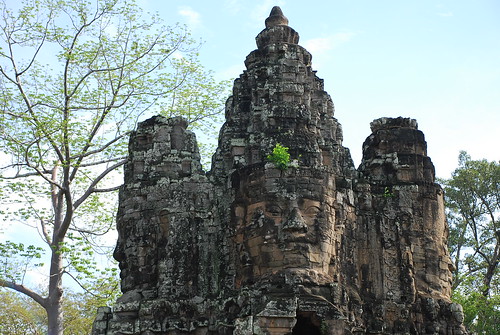
Angkor comes from an ancient word meaning 'capital', and this area was, in fact, the capital and center of the great Khmer empire. The largest palace and temple complex is called Angkor Thom, established by King Jayavarman VII in the late 12th century. You may recall his visage from our trips in Thailand, as he had his face carved everywhere as the face of the Buddha himself.

A Chinese explorer, Zhou Daguan, described his visit to Angkor in the late 13th century. He describes these figures pulling on a naga, or serpent. They represent an important Hindu story: The churning of the sea of milk. Supposedly, the devas (angels) and ashura (devils) pulled on naga, wrapped around an upside-down mountain in the sea of milk, to churn it to produce the elixir of immortality. The story is quite involved and serves as a creation myth for many different things.
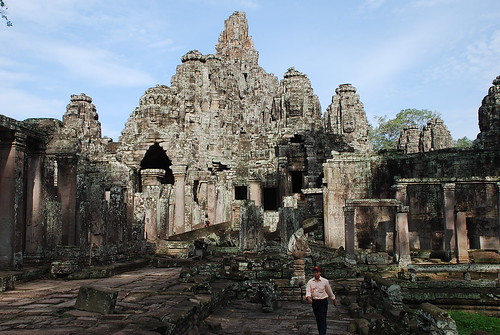
The Bayon is the primary temple of the city complex. It is a 3-level Buddhist mountain temple, with nearly 200 faces of the Buddha (or, as I mentioned, Jayavarman VII). However, while impressive, that is not the most important feature to archaeologists.

Around the galleries are an impressive array of bas reliefs--and besides the written account of Zhou Daguan, this is some of the only records we have of how the Khmer people lived.
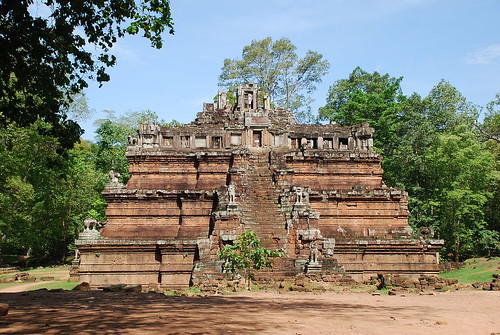
Less impressive, but no less important, is Phimeanakas. This is believed to have been the seat of Khmer kingship, where the ruler would ascend every night to ensure peace and tranquility throughout the realm by appeasing the naga who was the spirit of the land. Behind this structure was the royal palace, but it was made of wood and nothing significant remains.
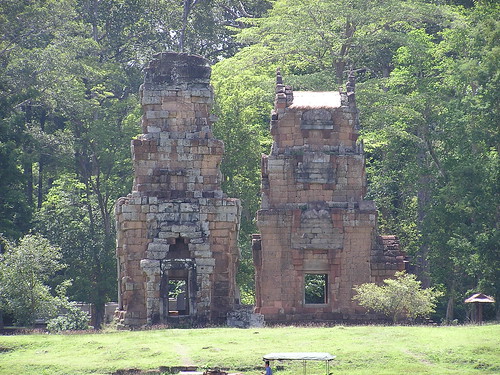
Other stone structures remain as well, but little or nothing remains of the wooden buildings that were once located within these walls. At 3km at a side, the city was huge. Protected by a moat which was part of an ingenious hydrological system that helped keep the fields of Angkor fertile. In its heyday, Angkor could raise three crops of rice a year. Now, that is only possible for those living directly on the river. However, recent discoveries may allow better irrigation once again, and the past may hold some clues for the future of Cambodia.
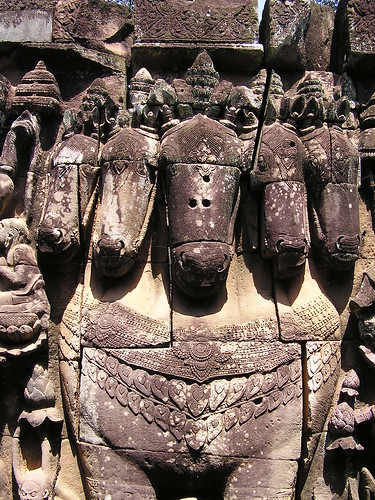
To be continued....